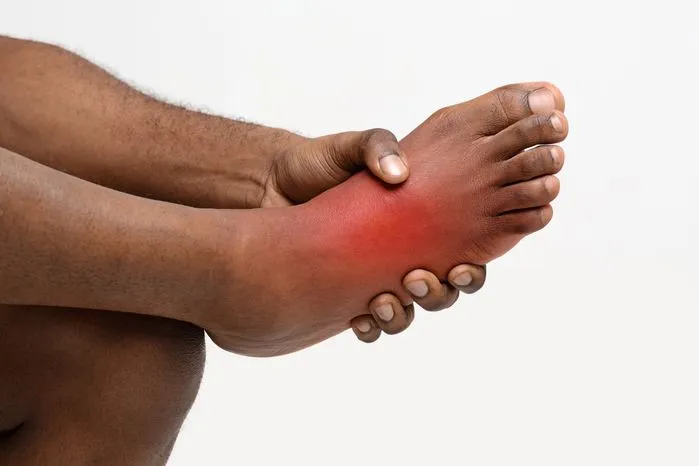
A hammertoe deformity is named so because the toe resembles a hammer when the toe curls or bends downward instead of pointing forward. It can affect any toe on the foot and usually occurs in the second, third, or fourth toes causing the toe to bend or curl at the middle joint known as the proximal interphalangeal (PIP) joint.
Types Of Hammertoe Deformity
There are three types of hammertoes:
Flexible Hammertoes
This is a milder form of deformity that is still developing so the affected toe can still move at the joint. The treatment options are plenty and non-invasive.
Semi-Rigid Hammertoes
At this stage, the hammertoe is starting to stiffen.
Rigid Hammertoes
This is a severe case of deformity since the tendons and soft tissues have tightened. At this stage, you cannot move your toe and it usually requires surgical treatment.
What Causes A Hammertoe Deformity?
Hammertoe deformity occurs due to an imbalance in the tendons, ligaments, or muscles that normally hold the toe straight. The muscles in the toes work in pairs. When there is an imbalance, excess pressure is exerted on the tendons at the toe joints hence a hammertoe is formed. It usually develops at birth but most times, it develops over time.
The wrong footwear does not necessarily cause a hammertoe. Instead, they contribute to the progression of the deformity. Wearing tight, ill-fitting shoes that squeeze the toes into pointed or narrow boxes, force the toes to fold over another to fit in. Eventually, the PIP joint becomes inflamed and bends or curls. High heels can worsen the problem since they tip the body’s weight forward forcing the toes into the front of the shoe.
Having certain types of arthritis, especially inflammatory types, such as rheumatoid arthritis can lead to a hammertoe deformity. With rheumatoid arthritis, the immune system attacks healthy joints of the foot leading to inflammation and consequently joint deformity.
Other common causes of hammertoe include:
- Polio
- Bunions
- High arch
- Traumatic toe injury
- Spinal cord or peripheral nerve damage
Signs And Symptoms
Hammertoe makes stretching, walking, or even wiggling the toes a painful experience. The common symptoms include:
- Swelling or redness
- Corns or calluses at the top or tip of the middle joint of the toe
- Claw-like toes
- Toes that bend downwards
- Ongoing or periodic pain
- Inability to walk comfortably or straighten the toe
Risk Factors of Hammertoe Deformity
Certain factors may increase your likelihood of developing a hammertoe deformity. These include:
- Family history of hammertoe
- Women who often wear tight pointed heels
- Wearing shoes that are too small
- Persons living with diabetes or have poor blood circulation
- A second toe that is longer than the big toe
Diagnosis And Treatment of Hammertoe Deformity
A doctor may diagnose a hammertoe by conducting a physical exam. In case of a bone, muscle, or ligament injury, image tests such as x-rays may be required.
Treatment for a hammertoe depends on the severity of the deformity. The doctor may recommend either surgical or non-surgical treatment.
Non-surgical Treatment
Early treatment aims to ease the pain caused by a hammertoe and doesn’t necessarily reverse the deformity. One of the first steps should be wearing the right footwear. Buy roomier shoes that extend at least half an inch past the toes. Excellent choices include sandals, athletic shoes, and shoes made from soft leather. It’s best to avoid tight pointed heels and keep the heels not higher than an inch.
A physician may suggest taping or splinting the toe to make it straight. You may incorporate certain exercises that stretch and straighten the toes such as towel curls. Using shoe inserts or pads aid in repositioning the toes to relieve pain.
Warm soaks, ice packs, and NSAIDs such as aspirin may help to relieve pain from mild hammertoe deformity. Some patients are injected with cortisone for temporary relief. However, this can have many side effects if used regularly or in high doses.
Surgical Treatment
In case the non-surgical options offer no real relief the doctor will recommend surgery. Often, the surgery is outpatient and local anesthesia is usually administered. The surgical procedure to be undertaken majorly depends on the severity of the case. Here are some of the common procedures:
- Arthrodesis: A procedure done to patients with rigid toe joints. The whole joint under the crooked toes is removed by a surgeon then a wire or internal plate is inserted to hold the bones in place.
- Tendon Lengthening: Patients with flexible toe joints have the tendons causing the imbalance lengthened to release the tension.
- Tendon Transfer: This procedure involves transferring tendons from the bottom of the toe to the top hence pulling the joint to a straight position.
- Basal Phalangectomy: The bones under the hammertoe are entirely removed.
- Weil osteotomy: The orthopedic surgeon cuts at the base of certain bones, rotates them, and fixes them in place with pins or screws
Bottom Line
Hammertoe is a condition that can be prevented and managed with the right precautionary measures. It’s advisable to seek the doctor’s advice if you notice anything unusual with your feet.

















